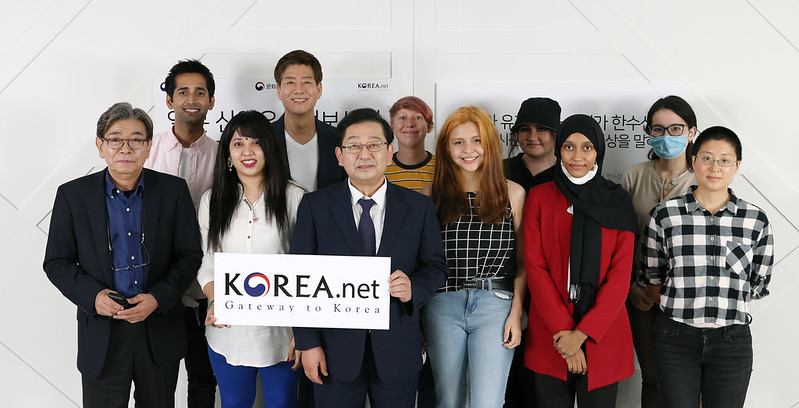- 한국어
- English
- 日本語
- 中文
- العربية
- Español
- Français
- Deutsch
- Pусский
- Tiếng Việt
- Indonesian
By Honorary Reporter Aimee Rose McLean from Australia
Photo= Korea.net DB

On June 29, I attended a talk at Korea.net's Seoul office on Japan's distortion of history surrounding Korean victims of forced labor. Hosted by TV personality Jung Jaehwan and featuring novelist Han Soosan and professor Yuji Hosaka as the panelists, the event gave valuable insight into how harmful an inaccurate portrayal of historical facts can be.
The recently opened Industrial Heritage Information Centre in Tokyo neglects to relay historically accurate information on the poor conditions Koreans endured in Japan's pursuit of industrialization. A display at this center focuses on the benefits of work during the Meiji Industrial Revolution in Japan rather than the atrocities suffered by Koreans forced to work on Hashima (Battleship) Island.
Japan forced Koreans to work from 1910-45 in underwater coal mines, and exploitation like this contributed to Japan making rapid strides in industrialization. Exploitation and mistreatment can be best observed through case studies such as those reflecting on what occurred on Hashima off the west coast of Japan; the island was utilized for coal mining.
Hundreds upon hundreds of Korean men were forced to work there in poor and unsafe conditions while enduring cruelty and torture from their Japanese employers. Their mistreatment extended beyond poor working conditions in the mines including incredibly long working hours for low pay, ethnic discrimination and undesirable living conditions. A combined 122 workers are said to have died in accidents, not including those who died for other reasons.
Japan initially pledged to erect the information center to inform the public of the nation's history of forced labor as well as the conditions workers had to live under during their colonial rule. The center's opening, however, made it apparent that the Japanese government had broken its word. The abuses and exploitation on Hashima caused hundreds to suffer mostly in the early 1940s, and as such predates Japan's ratification of the International Covenant on Civil and Political Rights and the International Covenant on Economic, Social and Cultural Rights.
Despite this, the modern take is that Japan's actions were blatant violations of human rights and were morally unsound. So the very least it can do to begin rectifying the issue is presenting an accurate portrayal of historical facts and openly admitting that these wrongs occurred. The suffering of the Korean victims must not be overlooked.
The Korea.net talk emphasized how crucial it is for the Japanese government to not gloss over the atrocities on the island and to instead ensure that the exhibition at the information center contains a more holistic and factual picture of what transpired on Hashima. Though the island might have helped Japan's industrialization, the dark side of its history is being omitted.
Distorting truths like this and providing misleading accounts to the public are incredibly harmful, especially since the people should trust such an information center to be give accurate facts. Those who lack perspective and knowledge of the events that occurred might interpret such an exhibition at the surface level without digging deeper to unearth the facts. The center in Tokyo presents misleading information to both Japanese and foreign nationals alike on an important part of history, in which Koreans suffered unfair treatment and horrifying conditions. Unfortunately, many data tools both online and offline in Japan display inaccurate portrayals of history to the public that favor the perpetrators of crimes and deny historical events.
At a time when Japan is breaking its promise by intentionally omitting important information to paint history a certain way, people must fact-check any data they come across and re-evaluate if what they're being sold reflects historical truth. Many Korean media outlets such as Korea.net, which is run by the Korean Culture and Information Service, provide more accurate accounts of Japan's history of forcing Korean and Chinese to work under a more holistic view of Hashima's dark history. Thanks to sources like this, more historically accurate information can be presented through a highly accessible platform so that the public is more accurately aware of the situation.
chaey0726@korea.kr
*This article is written by a Korea.net Honorary Reporter. Our group of Honorary Reporters are from all around the world, and they share with Korea.net their love and passion for all things Korean.